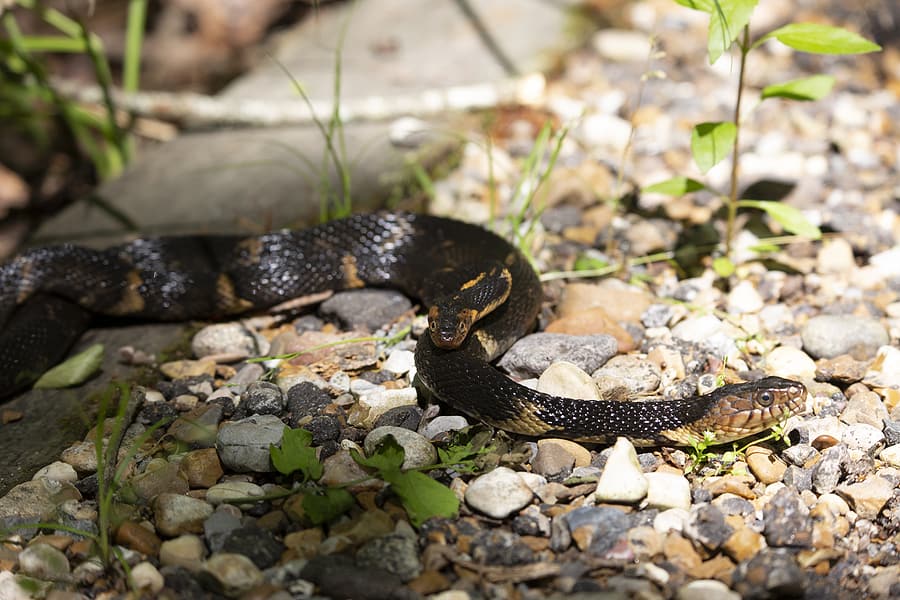As the weather warms up, snakes will begin to emerge from brumation (a state of deep sleep that reptiles and amphibians enter during periods of cold weather). Although it can be scary encountering a snake in your yard or in your home, the majority of them mean you no harm. In fact, most don’t want anything to do with humans at all! Most North American snakes are harmless and, in fact, there are only 5 venomous snakes in the state of Georgia.
The first step in preventing snakes is to figure out what is attracting them to your yard and home in the first place. Snakes will typically come around in search of either food or shelter. By eliminating these attractants, snakes will be less likely to hang around your personal space.
Shelter
Snakes will often come around in search of a place to hide out from predators or to lie in wait for their own prey. Try to avoid debris and rock piles in your yard. Don’t pile rocks up in your landscaping or let other debris accumulate in your yard. Snakes will also use tall grass to hide in so keep grass mowed short and mow it frequently. Mulch attracts both snakes and their food sources. Try to use less mulch or use another type of ground cover if possible. Store firewood away from your home and elevate it if possible as snakes will hide in the cracks and crevices.
Food
Snakes will primarily come around looking for or chasing food. Snakes are known to feed on rodents, birds, insects, and amphibians so eliminating these pests from your home and yard will also help keep snakes away. Excessive moisture attracts all of these food sources so try to avoid overwatering your lawn and getting rid of any standing water. Pick up fallen fruit as rodents and other pests love to eat them. The same goes for spilled birdseed from birdfeeders. Feed pets indoors if possible and, if not, don’t leave pet food out overnight. Keep trashcans clean and seal them tightly. Keep garages clean and clutter free. Inside, keep kitchens and other food areas clean.
Entry Points
Snakes will use a variety of methods to get into your home, garage, attic, or basement. Routinely inspect the exterior of your home and try to identify any potential entry points. Seal any cracks around your foundations, walkways, and porches. Consider installing fencing made of rigid mesh that is at least 2 feet tall and buried 4″ to 6″ into the ground. You can also attach aluminum flashing to the outside bottom portion of the fencing. Make sure the screens on your doors and windows are tightly sealed and in good repair. Use galvanized screens to cover your vents and drains. Close up cellar doors, broken gutters, pet doors, unsealed basement windows, open crawlspaces, and holes in your roof or siding. Keep tree branches trimmed back away from your home. Use gravel or other uneven ground cover as snakes cannot move or hide as easily on these.
When snakes are spotted around your home your first instinct is usually to either run away or get rid of it. While they can be disturbing, most snakes are actually beneficial to have around – eating other pests and keeping their populations under control. If you have an issue with snakes, contact your local pest control company who can help identify what type of snake you are dealing with and help catch and relocate it safely and humanely.
You May Also Be Interested In:
Controlling Millipedes In and Around Your Home
How To Keep Wildlife Out of Your Yard

